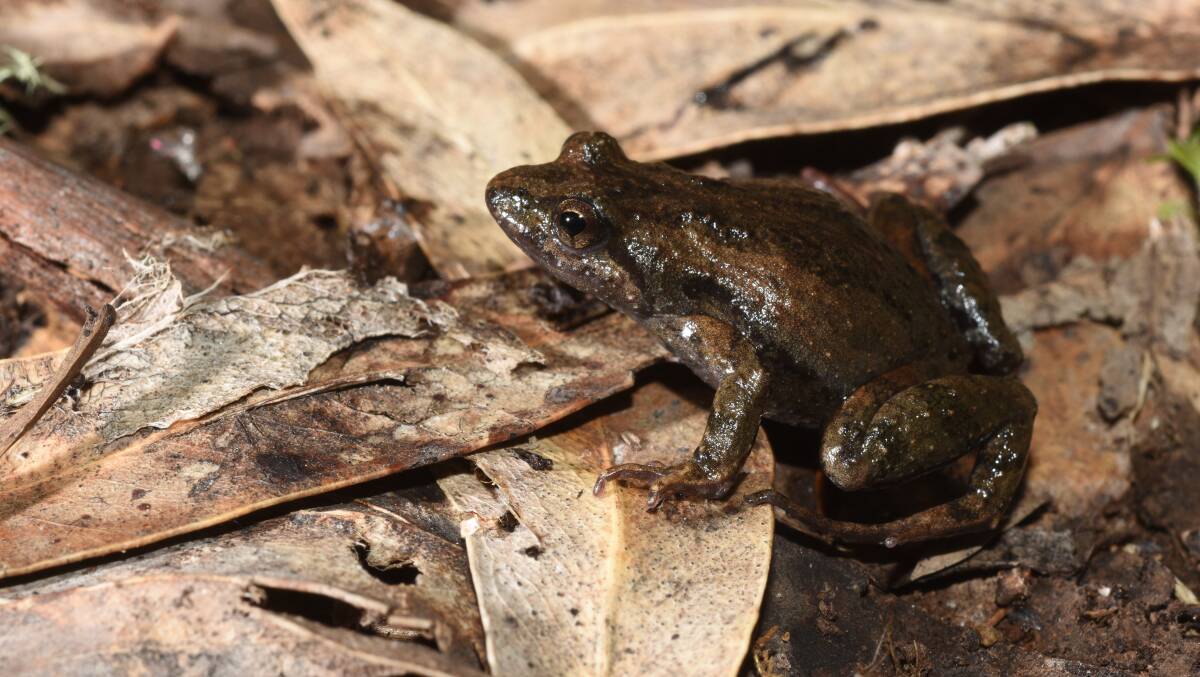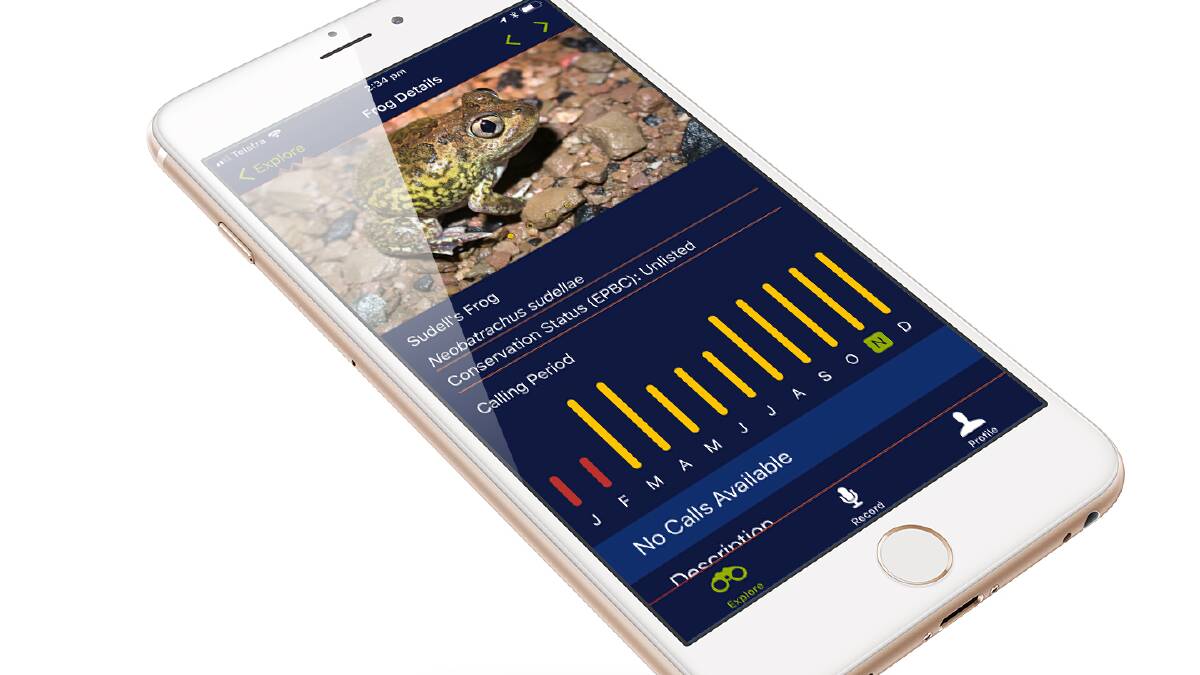
Australia’s first national frog count prompted me to go out into the neighbourhood at Mystery Bay yesterday evening armed with my mobile phone to record some frog calls.
Subscribe now for unlimited access.
or signup to continue reading
Narooma area residents and everyone around Australia can be a part of the national frog count using their mobile phones and the new FrogID app being launched to help record and catalog frog calls.
I soon found a knot of frogs, yes that is the collective noun for frogs, calling from a ditch on the side of Lamont Young Drive. Deep in song after the recent flush of rain, the frogs didn’t mind me recording as the birds sang in the background.
Because the new FrogID app is not yet launched, I was able to send my recording to Dr Jodi Rowley from the Australian Museum who is helping coordinate the frog count. She is curator of Amphibian and Reptile Conservation Biology at the Australian Museum and UNSW Australia.
“That is a great recording of a bunch of Common Eastern Froglets (Crinia signifera)!” she wrote back.
Well thanks Dr Jodi and it is exciting to go out and record frog calls and then get the species identified so I hope you get out there recording – the frogs certainly need all the help we can give them!
FrogID - a new app developed by the Australian Museum in partnership with IBM – will be launched on Friday, November 10. Check back and we will include the link when it's ready.
The free app is at the heart of Australia’s first national frog count, so everyone can join in to help save one of the most threatened groups of animals on Earth.
The FrogID app identifies frog species by the special sounds they make – from croaks and chirps, to whistles, ribbits, peeps, barks and grunts. The app has been designed for Australians to record frog calls in their backyard and at nearby parks, creeks, dams, streams and wetlands.

Recording and uploading these unique calls via the app will help identify different frog species across the country, and map where they are most at risk from habitat loss, disease, climate change and urbanisation.
Australia has 240 different species of frogs, many of which are under threat. Hundreds of frog species have already disappeared around the world and many more are on the edge of extinction.
Declining frog populations have serious impacts on the health of Australia’s waterways and ecosystems.
Frogs are also early indicators of the effects of climate change on our environment.
FrogID is run by the Australian Museum’s Centre for Citizen Science, with support from the Federal Government’s Citizen Science Grants and IBM Australia’s Impact Grants program.
Natural Science Museums from every state and territory are also teaming up with the Australian Museum on FrogID, to help conserve frog species across the country.
Now more on that frog you just heard on my recording, the Common Eastern Froglet (Crinia signifera):
A small species of frog reaching up to 3 cm in body length. It has a brown, grey, cream, beige, reddish or mustard yellow back, with or without longitudinal stripes, spots or patches.
There are small dark triangular patches along the upper lip. The belly is grey, with white and black mottling. The pupil is nearly round and the iris is gold. Fingers and toes are unwebbed, both without discs.
It is one of Australia’s most common species of frog. Breeding Biology Eggs are laid as small clusters in a wide variety of water bodies including streams, flooded ditches, grassland, permanent ponds, and dams.
Tadpoles can reach a total length of up to 3.5 cm and are variable in colour and pattern, being spotted or uniform black, gold or grey. Tadpoles remain at the bottom of water bodies, and take around two and a half to three months to develop into frogs.
Breeds during any time of the year. Similar Species Looks similar to Crinia nimba, Crinia parinsignifera, Crinia sloanei, Crinia tasmaniensis, Crinia tinnula, Geocrinia laevis, Geocrinia victoriana, Pseudophryne bibronii, Uperoleia fusca, Uperoleia laevigata, Uperoleia martini, Uperoleia rugosa, and Uperoleia tyleri in its distribution.
It has a different call and belly colour to the Geocrinia species, and lacks the large parotid glands and bright colours in the groin and thighs present in the Uperoleia species. The top of the arms at the shoulder and back of the thighs are a different colour in Pseudophryne bibronii.
It can most easily be distinguished from other Crinia species by its call. Distribution Found throughout the southeast except in western NSW, including eastern SA and TAS, the eastern half of NSW, ACT, and southeast QLD. (Source: Australian Museum)


